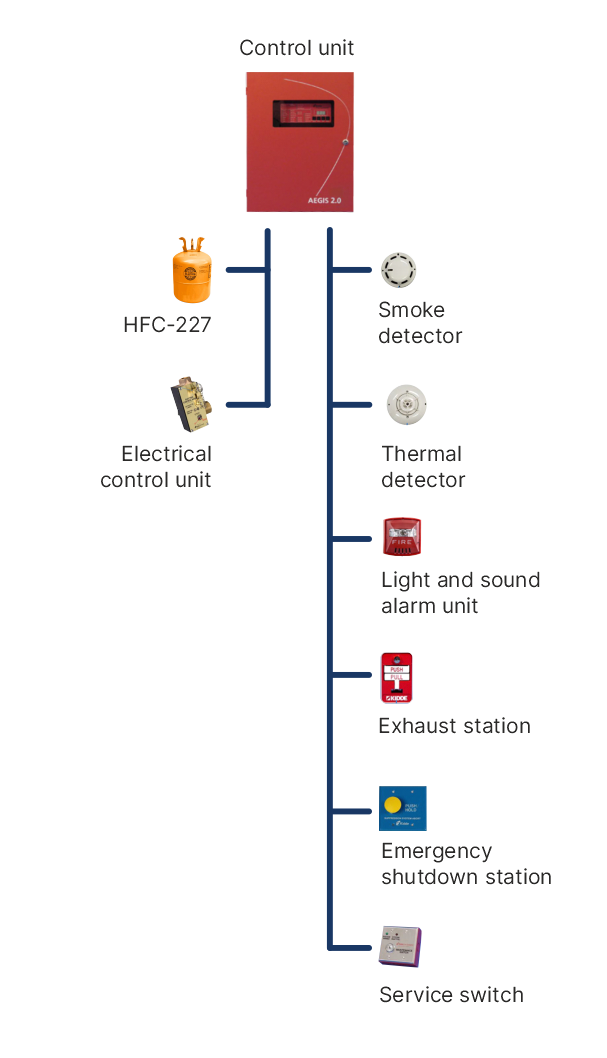
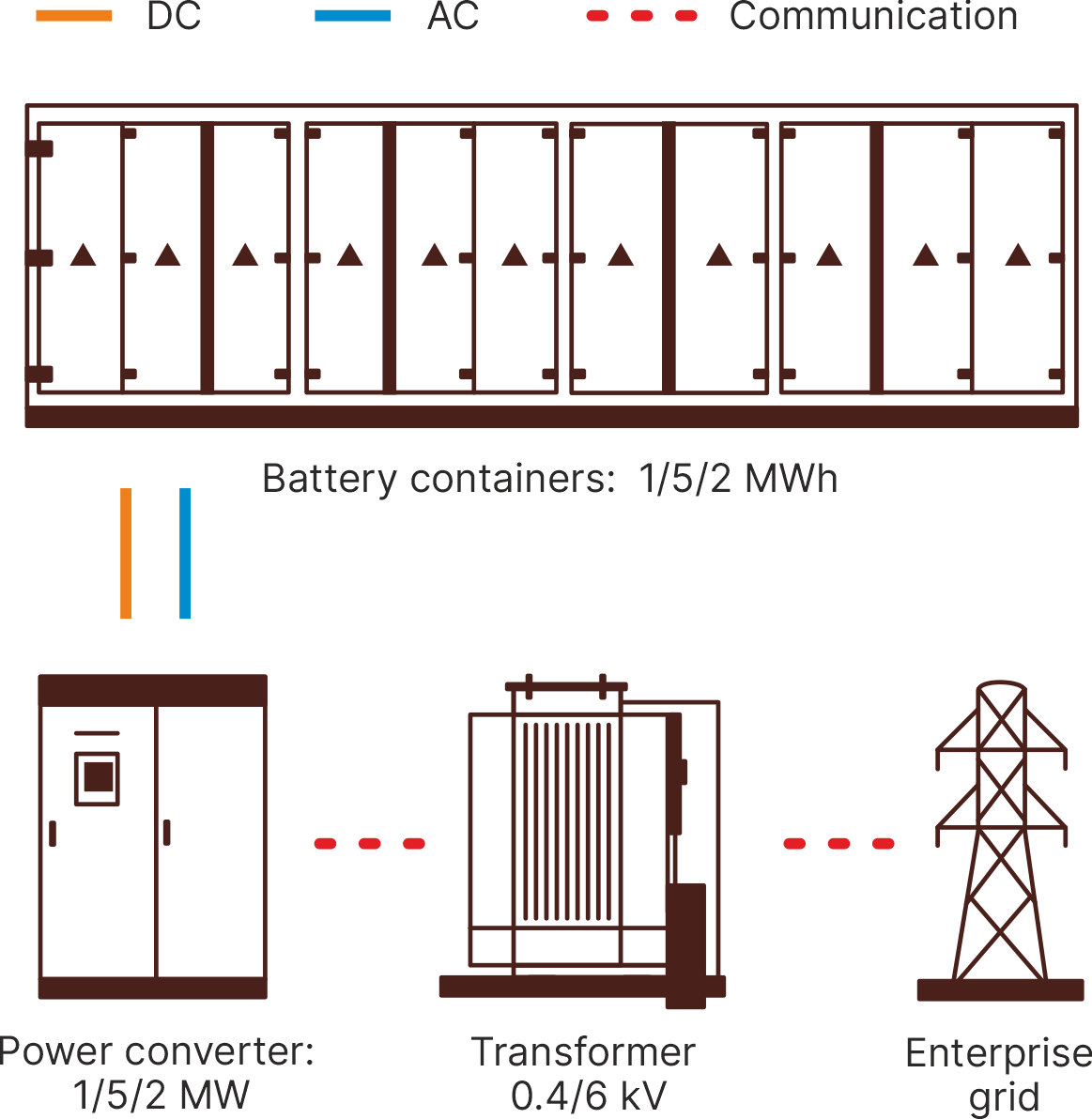
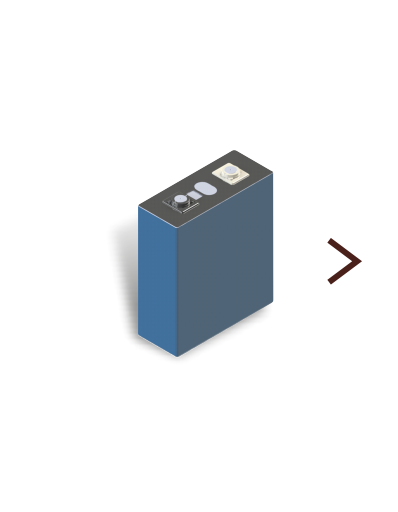
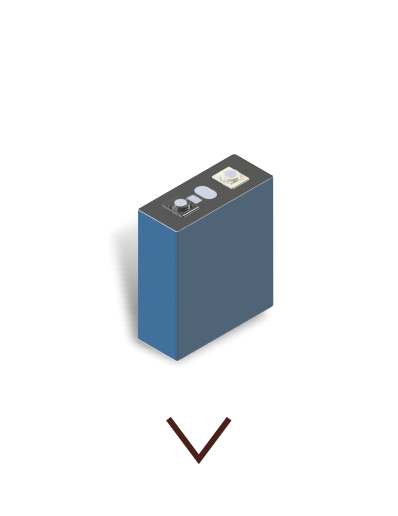
| Battery Cell Parameters | |
| Cell Type | CATL LFP |
| Rated voltage | 3.2 V |
| Operating voltage | 2.8 ... 3.6 V |
| Rated capacity | 280 Ah |
| Rated power consumption | 896 Wh (@25°C, 1C/1C) |
| Operating temperature, charge | 0 ... 55°C |
| Operating temperature, discharge | –20 ... 55°C |
| Weight | ~ 5.34 kg |
| Dimensions (L x W x H) | 71.7 x 173.9 x 207.2 mm |
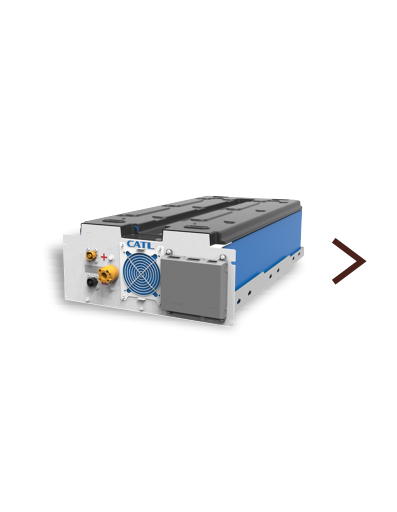
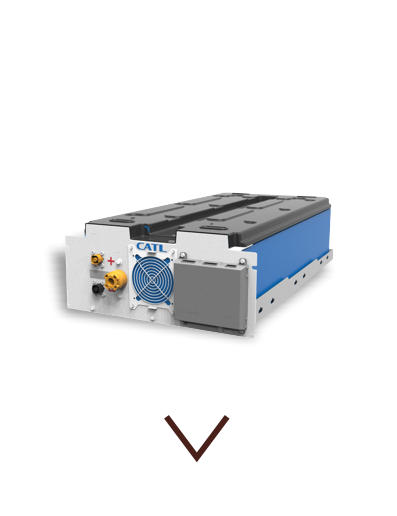
| Battery Module Parameters | |
| Connection | 1P20S |
| Rated voltage | 64 V |
| Voltage range | 56 ... 72 V |
| Rated capacity | 280 Ah |
| Rated power consumption | 17.92 kWh (@25°C, 1C/1C) |
| Operating temperature, charge | 0 ... 55°C |
| Operating temperature, discharge | –20 ... 55°C |
| Cooling | Air cooling |
| Weight | ~ 140 kg |
| Dimensions (W x D x H) | 516 x 950 x 234 mm |
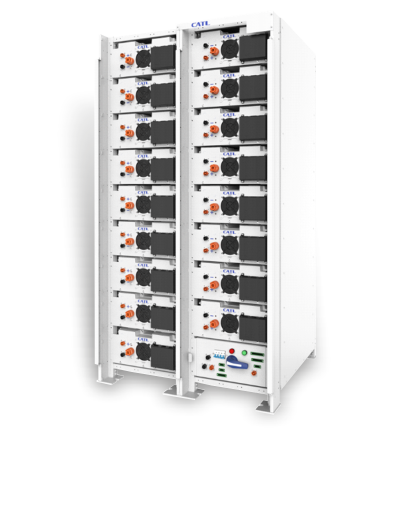
| Battery cabinet parameters | |
| Connection | 17 battery modules in sequence + 1 control module |
| Rated voltage | 1,088 V |
| Operating voltage range | 952 ... 1,224 V |
| Rated capacity | 280 Ah |
| Rated power consumption | 304.64 kWh (@25°C, 1C/1C) |
| Maximum continuous current | 280 A |
| Operating temperature, charge | 0 ... 55°C |
| Operating temperature, discharge | –20 ... 55°C |
| Weight | ~ 3,000 kg |
| Dimensions (W x D x H) | 1,200 x 1,040 x 2,300 mm |
| BMS | 2 levels |
| Battery Cell Parameters | |
| Cell Type | CATL LFP |
| Rated voltage | 3.2 V |
| Operating voltage | 2.8 ... 3.6 V |
| Rated capacity | 280 Ah |
| Rated power consumption | 896 Wh (@25°C, 1C/1C) |
| Operating temperature, charge | 0 ... 55°C |
| Operating temperature, discharge | –20 ... 55°C |
| Weight | ~ 5.34 kg |
| Dimensions (L x W x H) | 71.7 x 173.9 x 207.2 mm |
| Battery Module Parameters | |
| Connection | 1P20S |
| Rated voltage | 64 V |
| Voltage range | 56 ... 72 V |
| Rated capacity | 280 Ah |
| Rated power consumption | 17.92 kWh (@25°C, 1C/1C) |
| Operating temperature, charge | 0 ... 55°C |
| Operating temperature, discharge | –20 ... 55°C |
| Cooling | Air cooling |
| Weight | ~ 140 kg |
| Dimensions (W x D x H) | 516 x 950 x 234 mm |
| Battery cabinet parameters | |
| Connection | 17 battery modules in sequence + 1 control module |
| Rated voltage | 1,088 V |
| Operating voltage range | 952 ... 1,224 V |
| Rated capacity | 280 Ah |
| Rated power consumption | 304.64 kWh (@25°C, 1C/1C) |
| Maximum continuous current | 280 A |
| Operating temperature, charge | 0 ... 55°C |
| Operating temperature, discharge | –20 ... 55°C |
| Weight | ~ 3,000 kg |
| Dimensions (W x D x H) | 1,200 x 1,040 x 2,300 mm |
| BMS | 2 levels |

| Container Project | |
| Rated voltage | 1,088 V |
| Voltage range | 952 ... 1,224 V |
| Rated energy | 1.22 ... 3.04 MWh (@25°C, 1C/1C) |
| Location in the container | 4-10 battery cabinets connected in parallel, 1-2 DC unifying cabinets, 1 control cabinet |
| Operating temperature, charge | 0 ... 55°C |
| Operating temperature, discharge | –20 ... 55°C |
| Cooling | Air cooling |
| Storage device placement | 40" container |
| BMS | 3 levels |
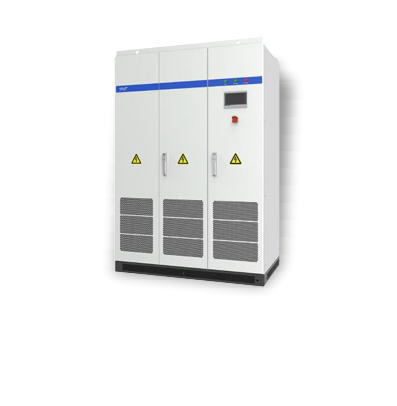
| Power Converter Parameters | |
| Maximum input current | 1,603 A |
| DC voltage range | 700 ... 1,500 V |
| Rated AC output power | 1,100 kVA |
| Output operating voltage | 440 V AC |
| Network frequency range | 50 Hz |
| Efficiency | 99.03 % |
| IP level | IP20 |
| Type of cooling | Smart air cooling |
| Operating temperature | –35 ... 60°C |
| Dimensions (W x H x L) | 1,400 x 2,000 x 800 mm |
| Weight | 1,300 kg |
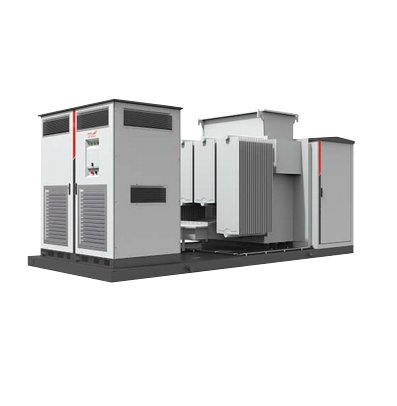
| Charger Parameters | |
| Maximum input current | 3,206 A |
| DC voltage range | 700 ... 1,500 V |
| Rated AC output power | 2,000 kVA |
| Full AC power | 2,200 kVA |
| Output operating voltage | 440 V AC |
| Network frequency range | 50 Hz |
| Efficiency | 99.03 % |
| Rated transformer power | 2,000 kVA |
| Voltage transformation coefficient | 0.44/6 kV |
| Transformer Type | Oil/Dry |
| IP level | IP55 |
| Type of cooling | Smart air cooling |
| Operating temperature | –35 ... 60°C |
| Dimensions (W x H x L) | 5,670 x 2,525 x 2,462 mm |
| Weight | 13,000 kg |
| Charger Parameters | |
| Maximum input current | 3,206 A |
| DC voltage range | 700 ... 1,500 V |
| Rated AC output power | 2,000 kVA |
| Full AC power | 2,200 kVA |
| Output operating voltage | 440 V AC |
| Network frequency range | 50 Hz |
| Efficiency | 99.03 % |
| Rated transformer power | 2,000 kVA |
| Voltage transformation coefficient | 0.44/6 kV |
| Transformer Type | Oil/Dry |
| IP level | IP55 |
| Type of cooling | Smart air cooling |
| Operating temperature | –35 ... 60°C |
| Dimensions (W x H x L) | 5,670 x 2,525 x 2,462 mm |
| Weight | 13,000 kg |
| Container Project | |
| Rated voltage | 1,088 V |
| Voltage range | 952 ... 1,224 V |
| Rated energy | 1.22 ... 3.04 MWh (@25°C, 1C/1C) |
| Location in the container | 4-10 battery cabinets connected in parallel, 1-2 DC unifying cabinets, 1 control cabinet |
| Operating temperature, charge | 0 ... 55°C |
| Operating temperature, discharge | –20 ... 55°C |
| Cooling | Air cooling |
| Storage device placement | 40" container |
| BMS | 3 levels |
| Power Converter Parameters | |
| Maximum input current | 1,603 A |
| DC voltage range | 700 ... 1,500 V |
| Rated AC output power | 1,100 kVA |
| Output operating voltage | 440 V AC |
| Network frequency range | 50 Hz |
| Efficiency | 99.03 % |
| IP level | IP20 |
| Type of cooling | Smart air cooling |
| Operating temperature | –35 ... 60°C |
| Dimensions (W x H x L) | 1,400 x 2,000 x 800 mm |
| Weight | 1,300 kg |

